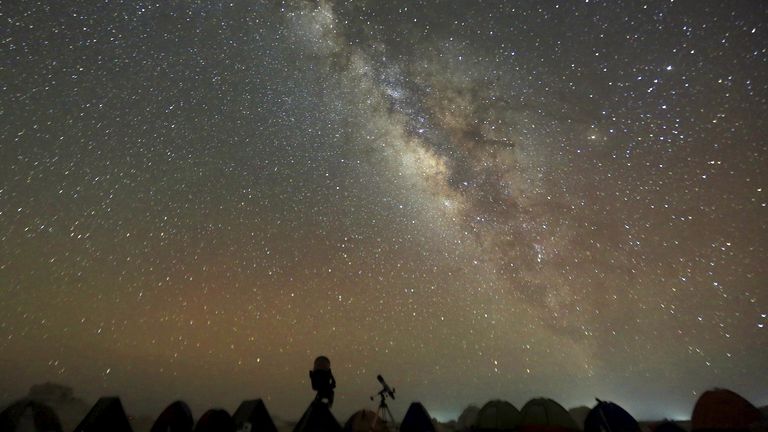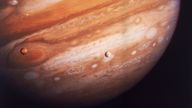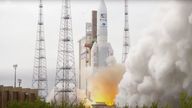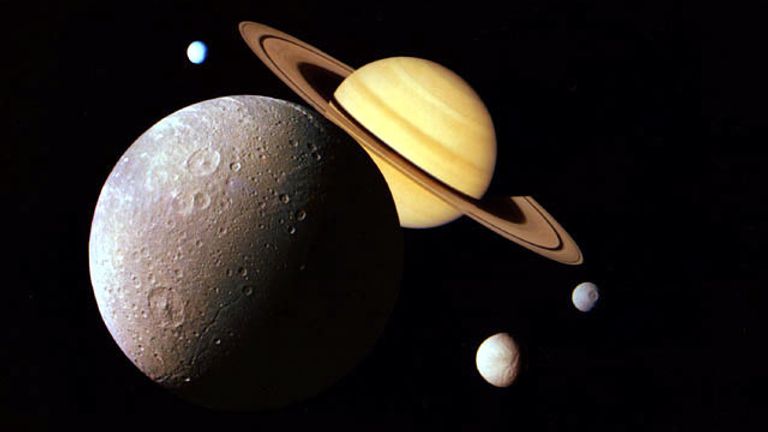Jupiter and Saturn to create first visible 'Christmas star' in 800 years
You have to go back to 1226 for the previous time such a "Great Conjunction" was observable with the naked eye.
Monday 14 December 2020 14:20, UK
Jupiter and Saturn are set to create a "Christmas star" with a dramatic close encounter that has not been seen from Earth in nearly 800 years.
The solar system's two largest planets will appear to merge, creating a bright point in the sky on 21 December.
The last time the two gas giants appeared so close was in 1623 - but astronomers say the stargazing conditions at the time and position of the sun meant it was most likely not seen.
You have to go back to 1226 for the previous time such a "Great Conjunction" was observable with the naked eye, according to EarthSky.
The next chance for people to enjoy the "Christmas star" will be in 2080.
Astronomers are calling the event the "Great Conjunction of 2020", which will coincidentally happen on the winter solstice - the longest night of the year in the northern hemisphere.
Jupiter and Saturn will be just 0.1 degree apart in Earth's sky, allowing telescopes to pick up both planets in the same field of view.
Conjunctions involving the two planets happen every 20 years. In 2000, they were too near the sun in Earth's skies to be easily observed.
Stargazers will now be hoping for favourable weather conditions and are being advised to look towards the southwestern sky at sunset.
NASA said Jupiter and Saturn have "gradually moved closer to each other" and will be just a "fifth of a full moon apart" at their closest point.
The space agency added: "Keep in mind that while the two gas giants may appear close, in reality they are hundreds of millions of miles apart.
"This will be quite a striking sight, but you will need to look fast as both planets will set shortly after sunset.
"Look above the western horizon after sunset for these bright, close planets - a clear view will help!"




